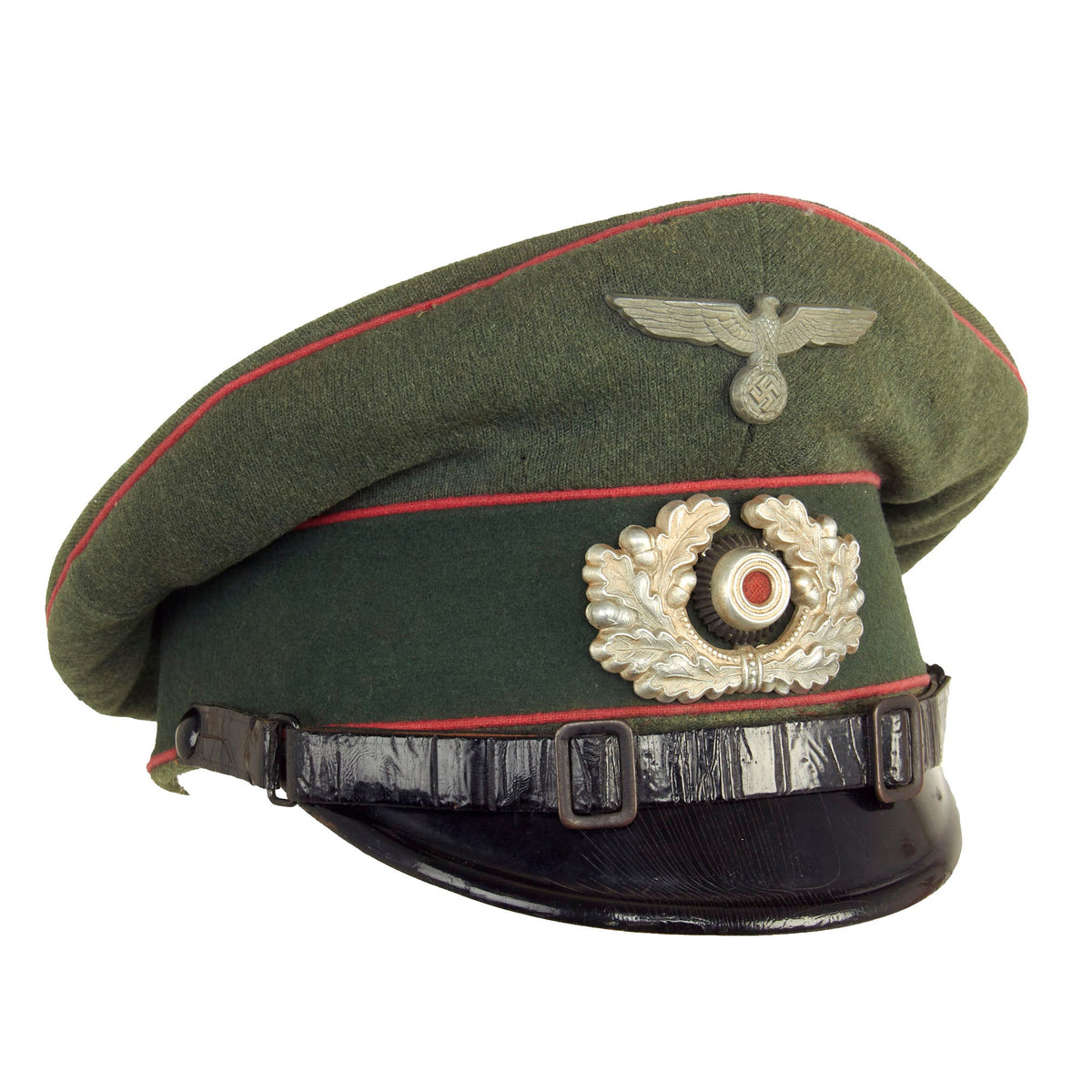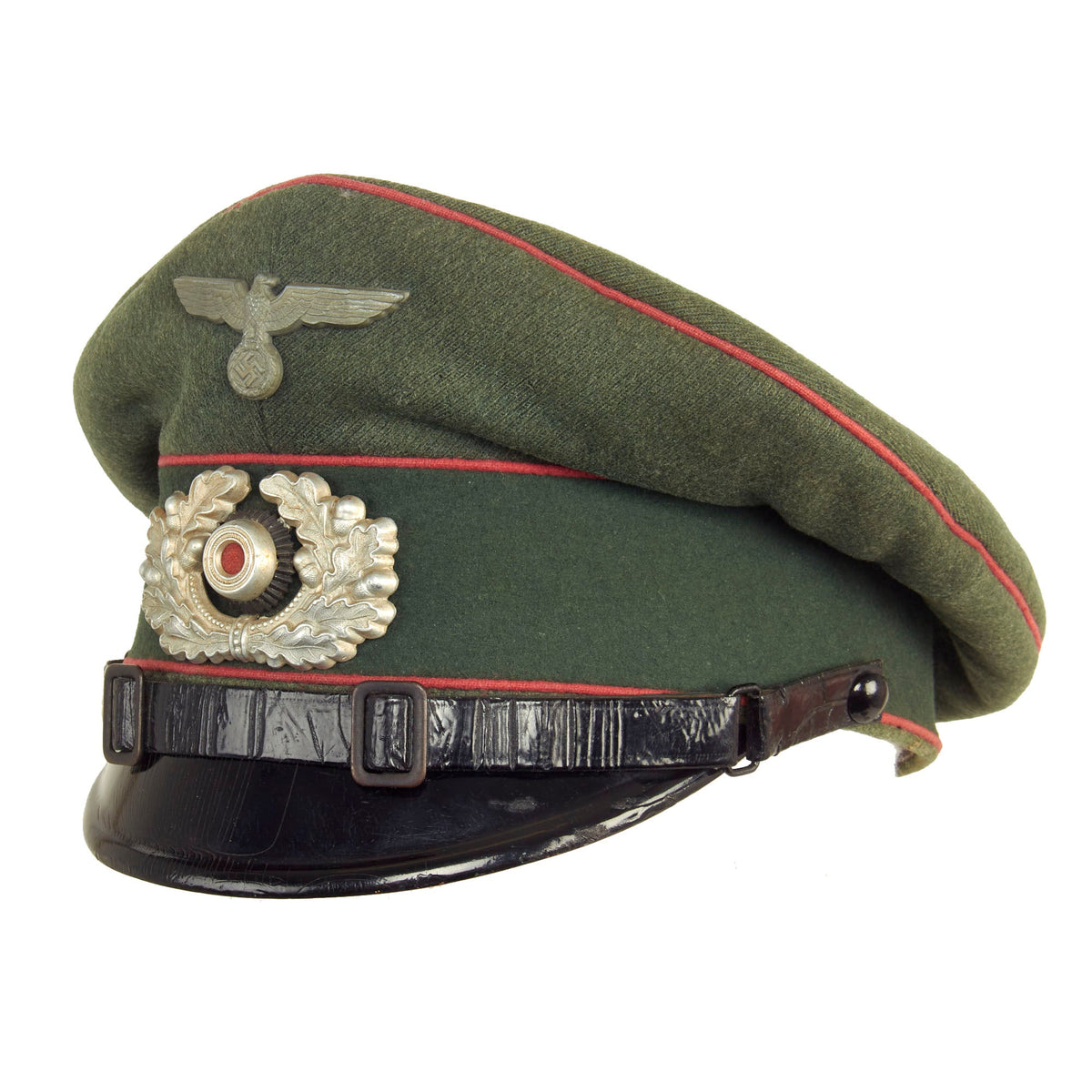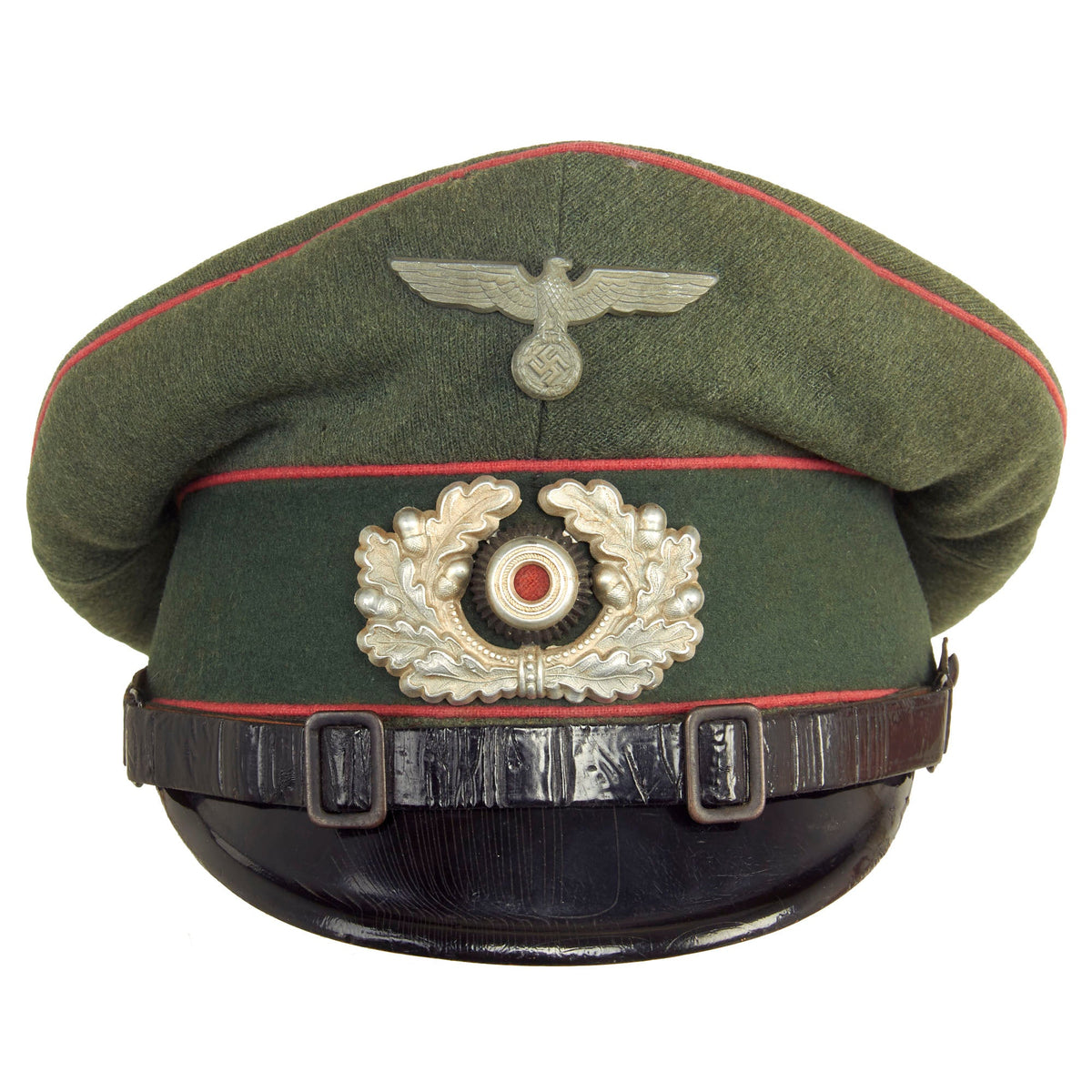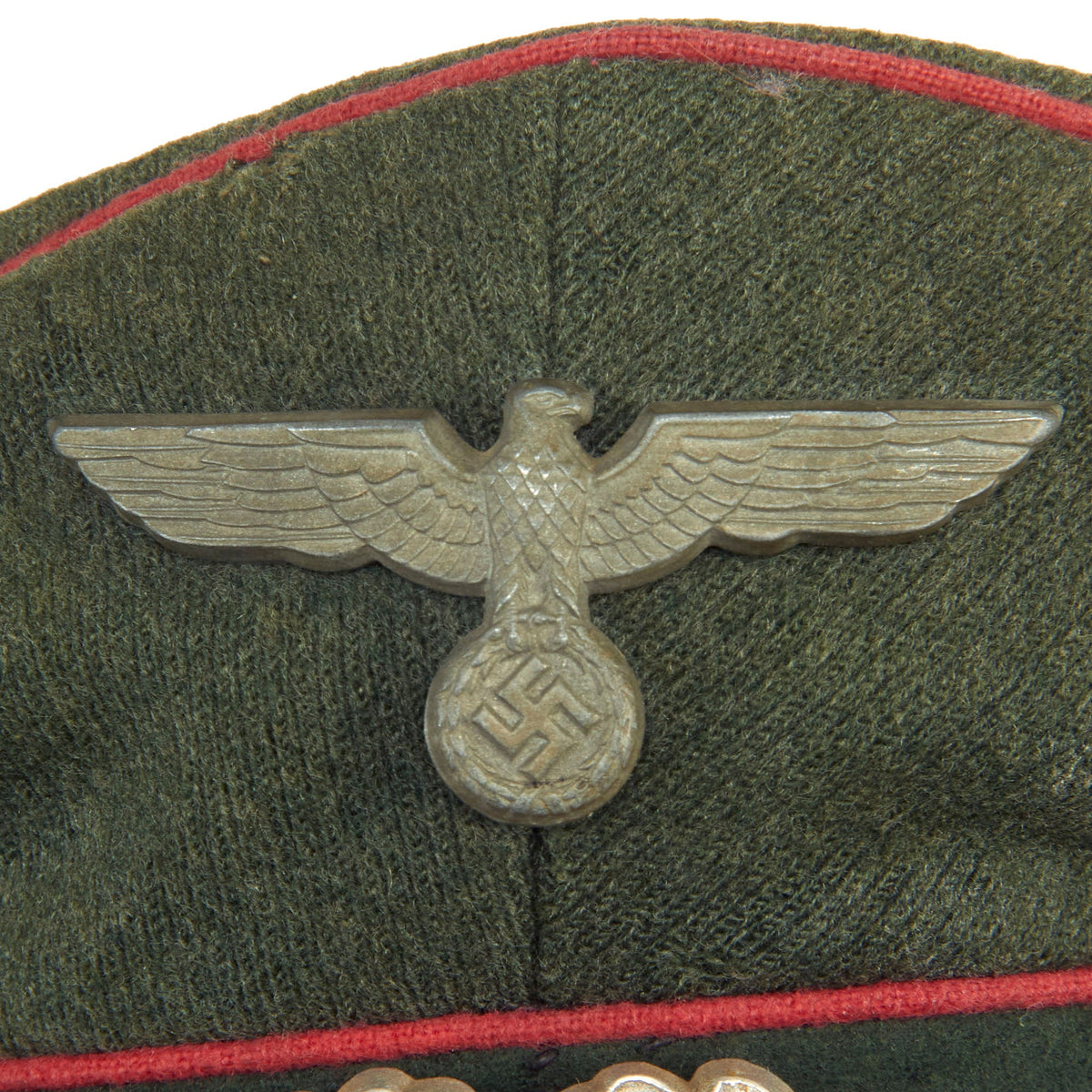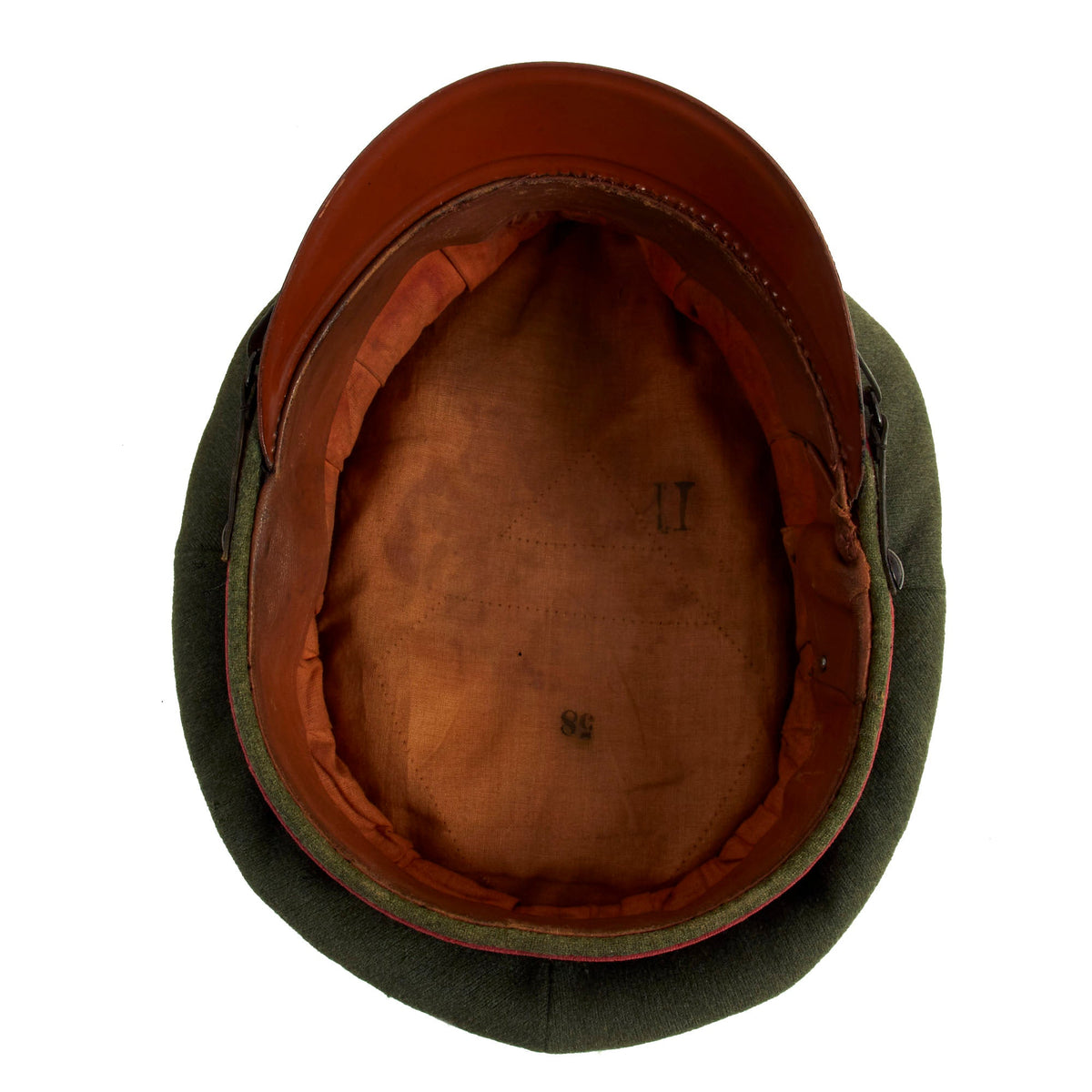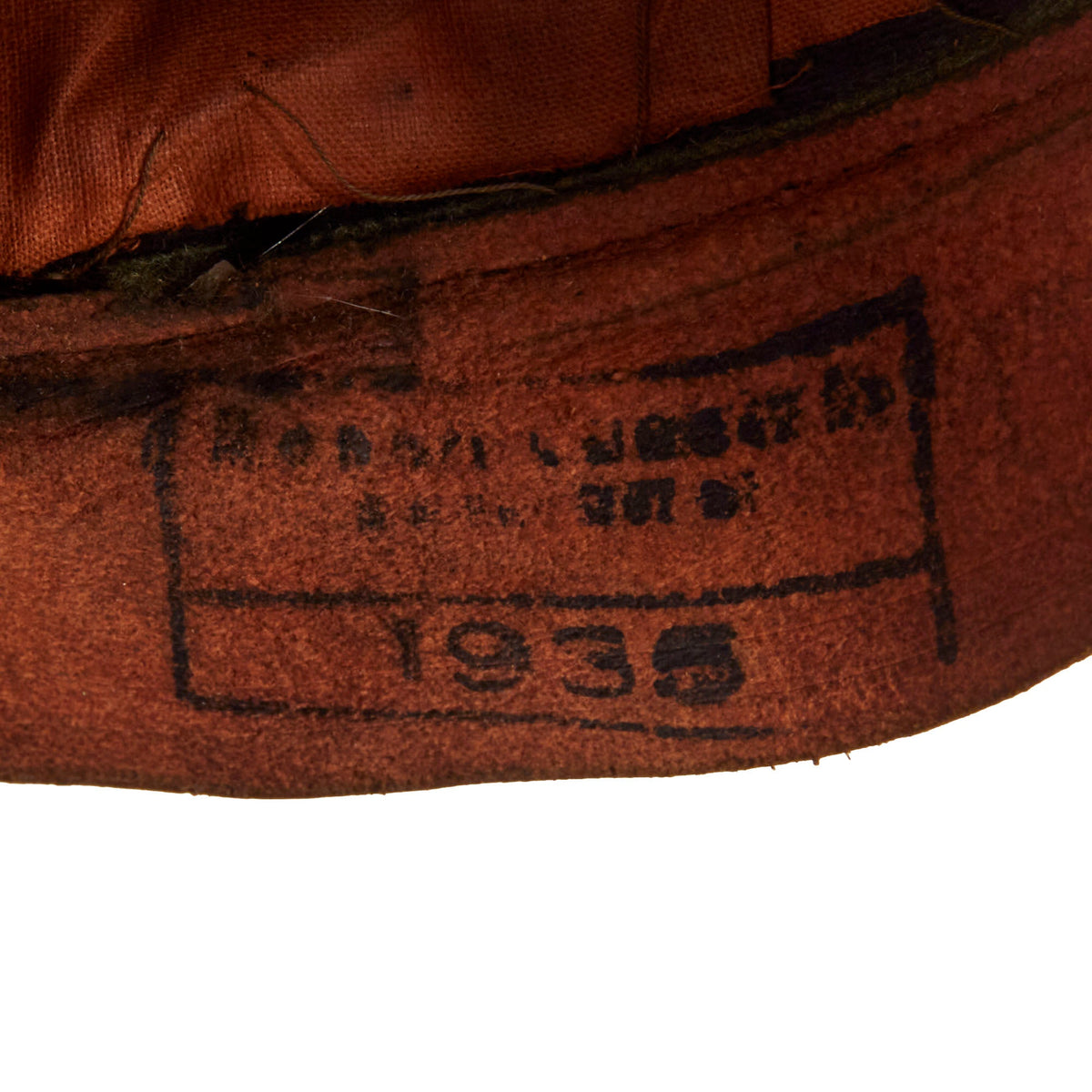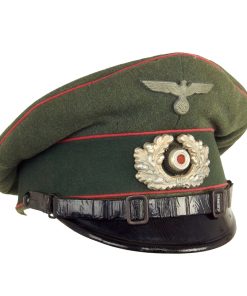Original German WWII Early 1935 Dated Army Heer Panzer EM/NCO Schirmmütze Visor Crush Cap – Size 58 Original Items
$ 1.295,00 $ 323,75
Original Item: Only One Available. This cap is a very early Pre-WWII example of a German Wehrmacht Heer Army EM/NCO Schirmmütze visor cap, with a lovely “saddle-form” shape. It has had the crown stiffener removed to give it a lovely “crushed” look, which was quite popular. This early example is much closer in color to the earlier Reichsheer pattern used during the Weimar period. It features the typical feldrgrau (field gray) “whipcord” weave wool construction, which has a bit more green in the mix than later examples. The cap band is a much lighter color than the “forest green” badge cloth used later, and is not that much darker than the crown.
The cap has matching rose-pink (rosa) piping along the top edge and flanking either side of the band. This is the Waffenfarbe (Corps Color) for the Panzertruppen (Armored Forces), as well as Kraftfahrkampftruppe – Kraftfahrtruppen (Motor Vehicle Combat Troops).
It is decorated with a well detailed cast zinc alloy eagle insignia on the peak and and an open aluminum wreath surrounding a metal tri-color cockade on the band. The insignia are in very good condition, and have a lovely patina of age to them, with the red fabric insert in the cockade having faded to a dark orange color. The cap has the correct black patent leather EM/NCO chin strap with double buckles, which shows age and “melting” to the finish. The vulcanfibre visor has a smooth black leather-look upper, exhibiting a lovely pattern of checking and crazing in the black enamel. It only shows light wear along the edge, and is brown on the underside. The stitching securing it to the cap has degraded, so it is quite loose on the cap, and should be handled with care.
The inside of the cap is lined with brown / orange ‘service cloth’ type fabric, which is now stained from use. The top plastic sweat shield is completely missing, with the stitch holes still visible, and it is marked with a size 58 where the shield used to be. It definitely has a great service worn look, with staining overall on the interior.
The brown leather sweatband is present, and actually in very good condition, with moderate wear and no major tearing. There has been some repair work done to the stitching, so it is still well attached to the cap. The underside also has some great markings, including a 1935 date, as well as other markings that could definitely be a great research project. The leather is soft and really in fantastic condition for a cap of this age.
Overall condition is very good, with the exterior colors well retained, and a great lightly worn look. There are a few tears and some moth nips here and there, but no major damage.
A very nice example of a classic “crush cap” worn by German Army Panzer Tanker NCOs in WWII. Very impressive and ready to display!
The German Schirmmütze Visor Cap:
The visor cap (Schirmmütze) was an important part of the headgear worn by German uniformed military, civil, paramilitary and political organizations during the Third Reich. This was the standard cloth headgear worn as a part of the service uniform. Visor caps were worn outdoors as well as indoors, and were often required to be worn by all personnel on duty. Visor caps were made in versions specific to each organization and were often further differentiated through the use of insignia, colored piping, or style of chin cord, to indicate rank, role or branch. The insignia used on these caps ranged from simple stamped metal emblems, to elaborate hand embroidery. Visor caps were issued to enlisted soldiers and NCOs in the military and in some other organizations. Officers had to purchase their own hats, and lower ranks could choose to purchase caps that were of a higher quality than the rather basic, issue examples. The private purchase caps were generally made in very high quality, with fine materials. A wide variety of fabrics were used, from Trikot and doeskin, to heavy wool, or even lightweight white fabric for summer wear. In the military, issue of these caps was generally suspended shortly after the outbreak of the war, but they continued to be worn by some troops until the end of the war.
Fast Shipping with Professional Packaging
Thanks to our longstanding association with UPS FedEx DHL, and other major international carriers, we are able to provide a range of shipping options. Our warehouse staff is expertly trained and will wrap your products according to our exact and precise specifications. Prior to shipping, your goods will be thoroughly examined and securely secured. We ship to thousands clients each day across multiple countries. This shows how we're dedicated to be the largest retailer on the internet. Warehouses and distribution centres can be located throughout Europe as well as the USA.
Note: Orders with more than one item will be assigned a processing date depending on the item.
Before shipping before shipping, we'll conduct a thorough inspection of the items you have ordered. Today, the majority of orders will be delivered within 48 hours. The delivery time will be between 3-7 days.
Returns
The stock is dynamic and we cannot completely manage it because multiple stakeholders are involved, including our factory and warehouse. So the actual stock may alter at any time. It's possible that you may not receive your order once the order has been made.
Our policy is valid for a period of 30 days. If you don't receive the product within 30 days, we are not able to issue a refund or an exchange.
You can only return an item if it is unused and in the same state as the day you received it. You must have the item in its original packaging.
Related products
Uncategorized
Uncategorized
Armored Burgonet Helmet & Polearm from Scottish Castle Leith Hall Circa 1700 Original Items
Uncategorized
Uncategorized
Uncategorized
Uncategorized
Uncategorized
Uncategorized
Uncategorized
Uncategorized
Uncategorized
Uncategorized
Uncategorized
Uncategorized
Uncategorized
Armoured Fighting Vehicles of the World: AFVs of World War One (Hardcover Book) New Made Items
Uncategorized
Uncategorized
Uncategorized
Australian WWII Owen MK1 Machine Carbine SMG Custom Fabricated Replica with Sling Original Items
